Middle East and Africa◀︎ ▶︎
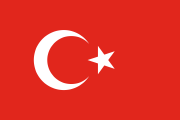
Turkey
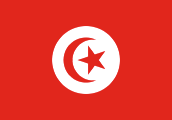
Tunis
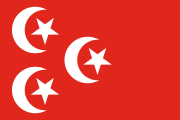
Egypt

Jebel Shammar
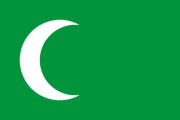
Nejd
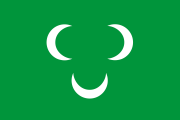
Tripoli 11 The most commonly reported flag from the period. Flags with green, white and red stripes also seem to have been used. Probably flown exclusively on ships. The Turkish flag was the official national flag.

Morocco 22 Flown over the palace in Rabat and on ships. Military flags on land were often dectorated with a yellow or green octagram.

Muscat and Oman · Bahrain 33 Arab monarchies, especially those in and around the Gulf, flew plain red flags from their ships. These weren't quite "national flags" in the modern sense, but European powers tended to view them that way.

Ras al-Khaimah · Sharjah 44 Officially all of the Trucial States were supposed to fly a square red flag with a thick white border. In practice this flag became exclusively associated with the Al Qasimi dynasty. The other states mostly flew plain red flags.
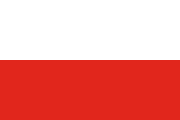
Madagascar
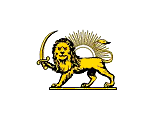
Persia

Futa Jallon

Sokoto Caliphate
green flag of Islam 55 Flown by exclusively by the sultan as a symbol of religious authority. Not really a "national flag" as we'd understand it in modern terms. The sultan also gave white flags to his vassal emirs within the Caliphate.

Liberia
Western Europe◀︎ ▶︎
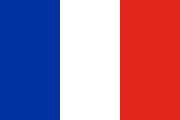
France
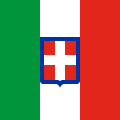
Sardinia
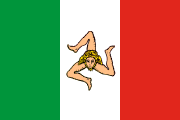
Sicily
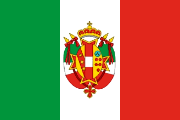
Tuscany
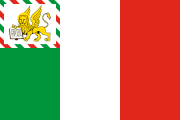
Venice
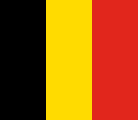
Belgium
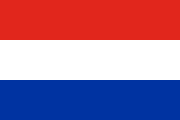
Netherlands

Luxembourg
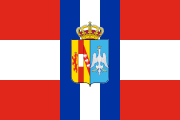
Modena and Reggio
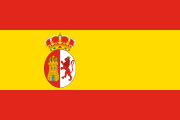
Spain
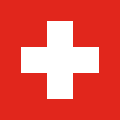
Switzerland
army flag 66 Flag of the federal army, treated as an unofficial national flag.
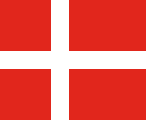
Denmark
merchant flag 77 Flown by merchant ships and the army. Private citizens were officially banned from flying the flag, but often did it anyway.
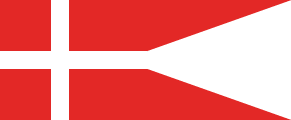
Denmark
sovereign flag 88 Flown by the royal house, the government, and the armed forces. Also granted to a select list of private institutions and companies.
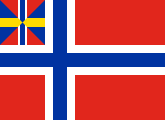
Norway
merchant flag 99 Allowed to be flown by anyone. The union mark in the top-left corner of the flag was flown on its own as a joint diplomatic flag for Sweden and Norway.

Norway
state flag 1010 Flown only on state-owned buildings and naval ships.
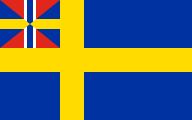
Sweden
merchant flag 1111 Allowed to be flown by anyone. The union mark in the top-left corner of the flag was flown on its own as a joint diplomatic flag for Sweden and Norway.
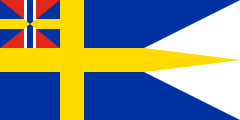
Sweden
war flag 1212 Flown on government buildings and by the military.

Greece
land flag 1313 Flown on land within Greece.

Greece
sea flag 1414 Flown at sea and abroad.
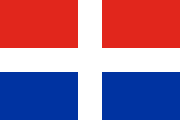
Samos
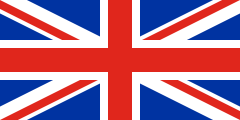
United Kingdom
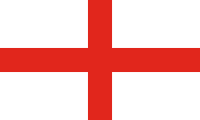
England
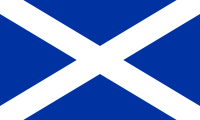
Scotland

Jersey

Monaco

Parma and Piacenza

San Marino
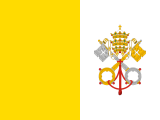
Papal States

Portugal

Malta
traditional flag 1515 Flown unofficially, mostly by civilian ships.
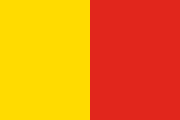
Andorra

Two Sicilies

Catalonia

Cornwall

Corsica

Wales
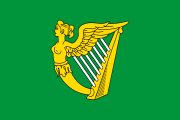
Ireland

Flanders
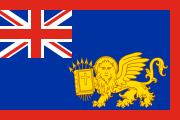
Ionian Islands
German States◀︎ ▶︎
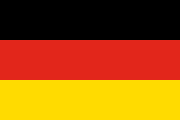
German Confederation
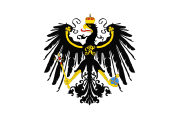
Prussia
royal flag 1616 Flown by the monarchy and government.
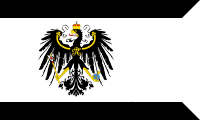
Prussia
merchant flag 1717 Flown by merchant ships.

Prussia
state colours 1818 The traditional heraldic colours of Prussia, often used as a flag on land.

Austria
Imperial colours 1919 The dynastic colours of the Hapsburg monarchy, often used as a flag on land.
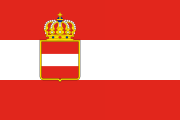
Austria
naval flag 2020 Flown by merchant and navy ships.
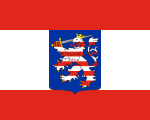
Hesse-Darmstadt

Hesse-Kassel
state colours 2121 Designated as the official colours of Hesse. Not technically a national flag, but often used as one.

Hesse-Homburg
state colours 2222 Designated as the official colours of Hesse. Not technically a national flag, but often used as one.

Lübeck
state flag 2323 Flown by the government.
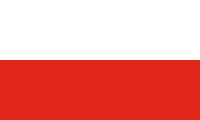
Lübeck
merchant flag 2424 Flown by merchant ships.

Hamburg

Frankfurt

Bremen 2525 The number of stripes could vary but eight was the most common.
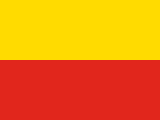
Liechtenstein
princely flag 2626 Flown by the prince, and unofficially as a national flag.

Württemberg
state colours 2727 Designated as the official colours of Württemberg. Not technically a national flag, but often used as one. Black and yellow flags were also in use around this time.

Waldeck-Pyrmont

Reuss Elder Line
state colours 2828 Designated as the official colours of Reuss. Not technically a national flag, but often used as one.

Reuss Junior Line
state colours 2929 Designated as the official colours of Reuss. Not technically a national flag, but often used as one.
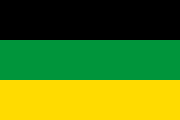
Saxe-Weimar-Eisenach

Saxon Duchies
state colours 3030 Designated as the official colours of the Ernestine duchies in Thuringia: Saxe-Altenburg, Saxe-Meiningen, and Saxe-Coburg-Gotha. Not technically a national flag, but often used as one.
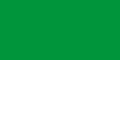
Anhalt
state colours 3131 Designated as the official colours of the Anhalt duchies: Anhalt-Bernburg, Anhalt-Dessau, and Anhalt-Köthen. Not technically a national flag, but often used as one.

Saxony
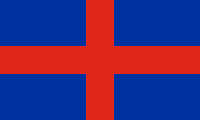
Oldenburg

Bavaria
state colours 3232 Designated as the official colours of Bavaria. Not technically a national flag, but often used as one. There are many reported variants from the period, some with more stripes, others with the diamond pattern from the Bavarian arms.

Schwarzburg-Rudolstadt
state colours 3333 Designated as the official colours of Schwarzburg. Not technically a national flag, but often used as one.

Schwarzburg-Sondershausen
state colours 3434 Designated as the official colours of Schwarzburg. Not technically a national flag, but often used as one.
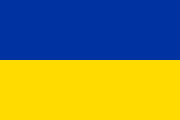
Brunswick
state colours 3535 Designated as the official colours of Brunswick. Not technically a national flag, but often used as one.
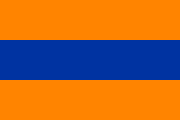
Nassau
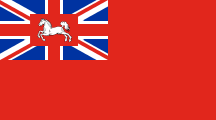
Hanover
merchant flag 3636 Flown by merchant ships.

Hanover
state colours 3737 Designated as the official colours of Hanover. Not technically a national flag, but often used as one.

Heligoland
Eastern Europe◀︎ ▶︎

Russia
Imperial standard 3838 The flag of the Emperor, often regarded as the Russian national flag during the period.

Russia
trade flag 3939 Flown by merchant ships.
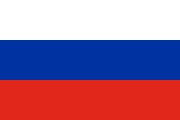
Carniola
national colours 4040 Designated as the official colours of the Austrian crown land of Carniola. Regarded as the unofficial national flag of Slovenia.
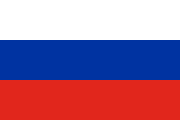
Slovakia 4141 Flown by advocates of Slovakian independence. The "Upper Hungary" region did not have an official flag.
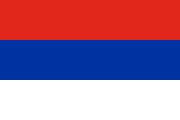
Serbia
national flag 4242 Allowed to be flown by anyone.
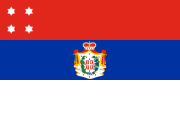
Serbia
state flag 4343 Flown the government and armed forces.
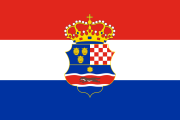
Croatia and Slavonia
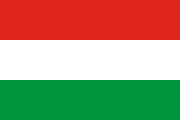
Hungary 4444 Prohibited within the Austrian Empire but still flown by Hungarian nationalists.
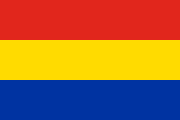
Romania 4545 Flown by advocates of Romanian independence and unification.

Moldavia
merchant flag 4646 Flown by rivergoing merchant vessels.
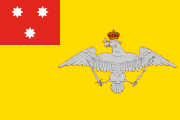
Wallachia
merchant flag 4747 Flown by rivergoing merchant vessels.
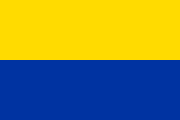
Ukraine 4848 Flown by Ukrainian nationalists. The order of colours wasn't fixed.
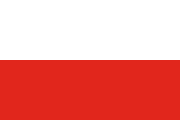
Bohemia
state colours 4949 Designated as the official colours of the Austrian crown land of Bohemia. Not an official flag, but informally regarded as a Czech national symbol. A white flag with the Bohemian coat of arms was also sometimes used.

Poland
banner 5050 The former royal banner of Poland, no longer official but still used as an informal national symbol.
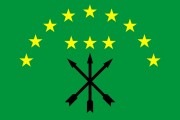
Circassia
South Asia and the Indian Ocean◀︎ ▶︎
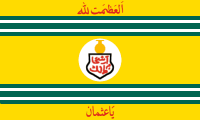
Hyderabad

Jammu and Kashmir 5151 The maharaja's flag had yellow stripes at the top and bottom.

Oudh
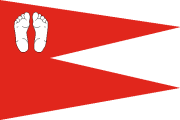
Jhabua 5252 The raja's flag was rectangular

Dewas
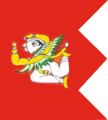
Kota
princely flag 5353 Flown by the Maharao and also used as a state flag. The flag was sometimes much longer.

Nepal 5454 Nepal's flag started as two pennants which were flown together: the top one representing the king, and the bottom one representing the hereditary prime minister.

Maldive Islands

Kishangarh

Sailana

Ajaigarh 5555 The reverse side of the flag showed a moon and a flower.

Mewar 5656 Mewar had a number of reported princely banners which were also sometimes used as state flags. The most common one had a large yellow sun and a blue katar dagger.
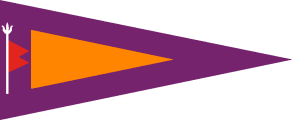
Porbandar
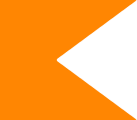
Kolhapur 5757 Kolhapur flew the Maratha saffron banner as a state flag. The maharaja had a diagonally-divided red and orange flag.

Nagpur 5858 Nagpur flew the Maratha saffron banner as a state flag.
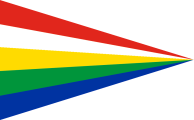
Jaipur
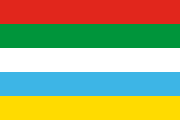
Alwar
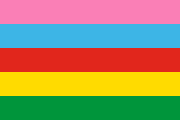
Idar
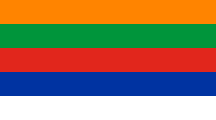
Sirohi
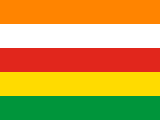
Jodhpur
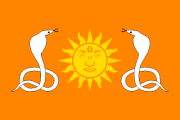
Gwalior
princely flag 5959 Flag of the maharaja, also used as a state flag. Plain saffron flags were also sometimes flown.
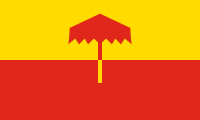
Jaisalmer

Bikaner

Banswara

Arcot

Dholpur

Rajpipla
princely flag 6060 Flown by the maharaja and often used as a state flag.

Rajpipla
national flag 6161 Allowed to be flown by civilians.
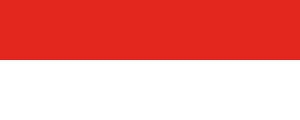
Indore 6262 Inland river boats flew a triangular pennant in the same colours.
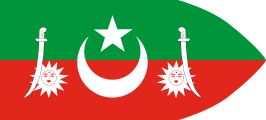
Kalat

Travancore
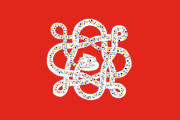
Manipur

Rajgarh
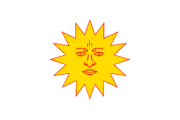
Sitamau 6363 The Raja's flag had a red sun

Bundi
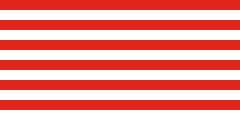
Alirajpur
Southeast Asia◀︎ ▶︎
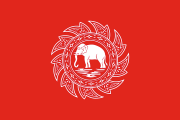
Siam
state flag 6464 Flown by the government.
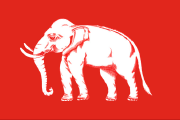
Siam
merchant flag 6565 Flown by merchant ships.

Luang Prabang
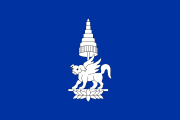
Champassak

Burma

Sulu

Johor · Kelantan · Perak · Terengganu 6666 Malay monarchs often flew plain white flags. These standards eventually evolved into individual state flags as more colours and symbols were added.

Jambi
sultan's flag 6767 Flown by the sultan and by naval ships.

Jambi
nobles' flag 6868 Flown by nobles at sea.

Jambi
merchant flag 6969 Flown by commoner merchants at sea.

Brunei
sultan's flag 7070 Flown by the sultan and also used as an unofficial state flag.
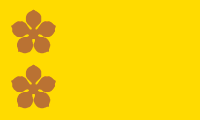
Deli
sultan's flag 7171 Flown by the sultan and also used as an unofficial state flag.

Sarawak
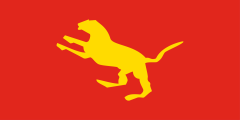
Kedah

Aceh
sultan's flag 7272 Flown by the sultan and by warships. There are many other reported flags from the era, and it's not clear exactly how they were all used. Merchant ships often flew a plain red flag.

Asahan
Oceania◀︎ ▶︎

Tahiti

Huahine
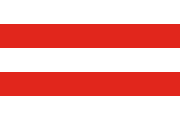
Raʻiatea
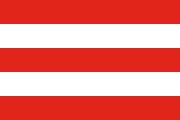
Bora Bora
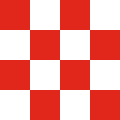
Tahuata

Mangareva

Hawaiʻi
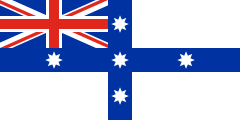
Australia
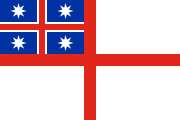
New Zealand 7373 The former flag of the United Tribes of New Zealand, which remained in use as an unofficial symbol of the country.
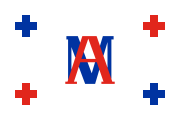
ʻUvea
North America◀︎ ▶︎
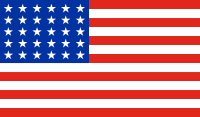
United States

Texas

Métis
Latin America◀︎ ▶︎

Brazil
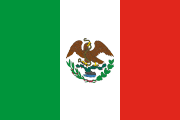
Mexico

Peru
national ensign 7474 Flown by the government, the navy, the national police, and national sports teams. Raised at major ceremonies. The army uses a similar flag with a different coat of arms.
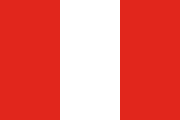
Peru
national flag 7575 Allowed to be flown by anyone.
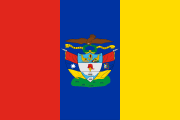
New Granada
war flag 7676 Flown on warships, fortresses, public buildings, and by diplomats abroad.

New Granada
merchant flag 7777 Flown by merchant ships.
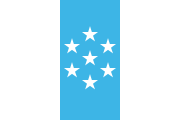
Ecuador
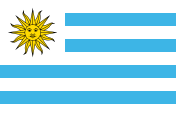
Uruguay
Defence government 7878 Flown by the government of Joaquín Suárez and Fructuoso Rivera, which controlled only Montevideo.

Uruguay
Cerrito government 7979 Flown by the government of Manuel Oribe, which controlled most of Uruguay's territory during the Seige of Montevideo.
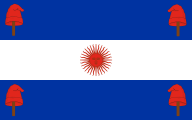
Argentina

Honduras · Nicaragua · Salvador

Guatemala

Paraguay
front side

Paraguay
back side
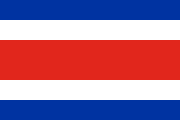
Costa Rica
national flag 8080 The most common Costa Rican flag. Officially designated for private citizens, but in practice often used on government buildings and schools too.
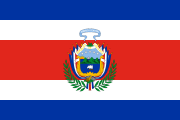
Costa Rica
national ensign 8181 Flown by the government and by diplomatic missions, although also used sometimes by private citizens.
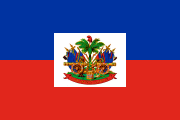
Haiti
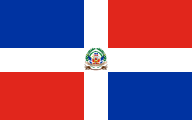
Dominican Republic
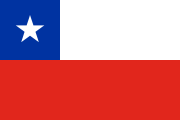
Chile

Venezuela
national ensign 8282 Flown by the government and armed forces.
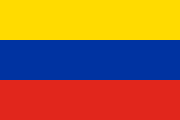
Venezuela
national flag 8383 Allowed to be flown by anyone.
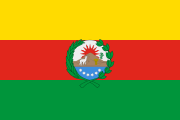
Bolivia
state flag 8484 Flown by the government and armed forces.
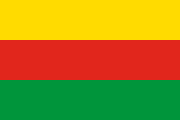
Bolivia
national flag 8585 Allowed to be flown by anyone.
Events of 1848◀︎ ▶︎
It's tricky to choose a starting year for a project like this. Here in 2022, when this page is being written, national flags are ubiquitous. Every country has an official canonical flag which represents it in war, diplomacy, commerce, international sport, and any other arena you can think of. Flags are enshrined in constitutions, specified in detailed laws, and mass produced by the millions. They're flown in every corner of the world, by governments and private citizens alike. They're even flown online, thanks to the 200+ flag emojis that can be accessed from any smart phone's keyboard.
This is a much more recent phenomenon than you might think. A hundred years ago there were huge swaths of the world where the only flags were foreign objects flown by colonizers and occupiers. A hundred years before that, the vast majority of the world's population lived in countries without flags. China didn't see any reason to adopt national flag until 1862. Bhutan, the world's last independent flagless country, didn't adopt one until 1949. And even in places where flags existed, they could be vanishingly rare. In some countries they were only flown by navies or merchant fleets. In others there was literally only one flag — a single bespoke physical object, flown exclusively in the presence of the monarch.
All of which is to say, the national flag as we think of it today has not been around forever. It emerged in Early Modern Europe and spread to the rest of the world via European imperialism. That means the further back you go on these lists, the more unbalanced their viewpoint becomes. Eventually whole continents disappear and the very concept of a "World Flag Chart" becomes pretty unsuited to the actual history.
Since there's no perfect year to start from, let's begin in the mid-nineteenth century. By this point national flags were flying not just in Europe and the Middle East, but in parts of Asia, Oceania, the Americas, and even West Africa thanks to newly-independent Liberia. More specifically, we're starting with 1848, the Springtime of Nations — a year of global revolutionary upheaval which saw the birth of some of the world's most enduring national flags. It's arbitrary, but it's as good a jumping off point as we're going to get.
1848 REVOLUTIONS • The wave began with the February Revolution in France. The Second Republic issued a decree changing the order of the tricolour's stripes on February 24, but it was repealed on March 5.
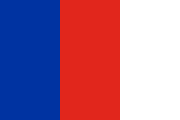
In Germany, revolutionaries waved the black-red-gold tricolour, and the Federal Assembly of the German Confederation quickly gave it official status on March 9. The decision was confirmed when the Frankfurt Parliament was convened later that year.

The green-white-red Tricolore flag was raised across Italy as nationalists agitated for the country's unification.

The Kingdom of Sardinia adopted a tricolour flag with the Savoy coat of arms in the centre on March 23.
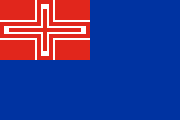


The island of Sicily broke away from the Kingdom of Two Siclies in January and adopted a flag on May 27. Meanwhile in Naples, King Ferdinand II was forced to grant a constitution. On April 3, a red and green border was added to the flag.




The Grand Duchy of Tuscany also got a constitution. Its old Austrian flag was replaced with a more Italian one in April 17.
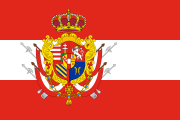


On March 22, Milan and Venice attempted to break away from the Austrian Empire under tricolour flags. Milan's independence only lasted until August 6, but Venice's lasted into 1849.
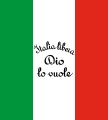

Northern Italy wasn't the only part of the Hapsburg Empire to see a nationalist uprising. The Hungarian Revolution broke out on March 15 under a red-white-green tricolour. The colours were taken from the Hungarian coat of arms.

Meanwhile, in what was then known as "Upper Hungary", Slovakian nationalists raised a white and red Slovakian flag on April 23. A blue stripe, inspired by the Russian flag, was added on August 19.



In the Duchy of Carniola, Slovenian nationalists also raised the pan-Slavic tricolour. The colours would eventually be given official status within the Duchy, since they were also found on the Carniolan coat of arms.

The Supreme Ruthenian Council was convened in Lviv on May 2. It adopted a golden lion on a blue field as the Ukrainian national emblem on May 18, and raised a blue and yellow flag on May 25.

Nationalist revolts broke out in the Turkish vassal states of Wallachia and Moldavia. The Wallachian revolutionaries adopted a blue-yellow-red tricolour on June 26, and it almost immediately became identified as the Romanian national flag.

In Ireland, Thomas Francis Meagher unveiled the Irish tricolour for the first time on March 7. His Young Ireland movement launched a nationalist uprising on July 29, but it was quickly put down.
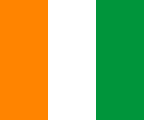
CENTRAL AMERICA • In the ten years since the dissolution of the Federal Republic of Central America, the former member states had been very slow to adopt unique national symbols. Honduras, Nicaragua, and El Salvador all still flew plain blue-white-blue tricolours, while Guatemala and Costa Rica had only added a simple coat of arms. Costa Rica was the first state to break the pattern: at the behest of First Lady Pacífica Fernández, it added a red stripe to its flag on September 29 as a show of support for the new French Republic.




CUBA • Narciso López, a Venezuelan general and filibuster who wanted to see Cuba annexed by the United States, attempted to launch an armed insurgency against the Spanish colonial government. He and his co-conspirators were discovered and he was forced to flee to New York, where one year later he would design the current Cuban flag. The flag he had been using before going into exile, with with its blue stripes and offset red star, was the direct precursor to that design.
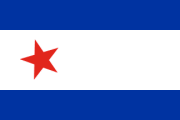
PARMA • On January 29, the new king Charles II had the blue and yellow colours of the Bourbon-Parma dynasty added to duchy's flag.



SARAWAK • Sir James Brooke, the "White Rajah" of Sarawak, raised a unique national flag of his own design on September 21.
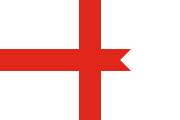


SWITZERLAND • Switzerland's new constitution was adopted on September 12, mandating that the armed forces had to fly a common federal flag. This design eventually evolved into the national flag.

UNITED STATES • A 30th star (for Wisconsin) was added to the flag on July 4.



Notes
1 The most commonly reported flag from the period. Flags with green, white and red stripes also seem to have been used. Probably flown exclusively on ships. The Turkish flag was the official national flag. ↩
2 Flown over the palace in Rabat and on ships. Military flags on land were often dectorated with a yellow or green octagram. ↩
3 Arab monarchies, especially those in and around the Gulf, flew plain red flags from their ships. These weren't quite "national flags" in the modern sense, but European powers tended to view them that way. ↩
4 Officially all of the Trucial States were supposed to fly a square red flag with a thick white border. In practice this flag became exclusively associated with the Al Qasimi dynasty. The other states mostly flew plain red flags. ↩
5 Flown by exclusively by the sultan as a symbol of religious authority. Not really a "national flag" as we'd understand it in modern terms. The sultan also gave white flags to his vassal emirs within the Caliphate. ↩
6 Flag of the federal army, treated as an unofficial national flag. ↩
7 Flown by merchant ships and the army. Private citizens were officially banned from flying the flag, but often did it anyway. ↩
8 Flown by the royal house, the government, and the armed forces. Also granted to a select list of private institutions and companies. ↩
9 Allowed to be flown by anyone. The union mark in the top-left corner of the flag was flown on its own as a joint diplomatic flag for Sweden and Norway. ↩
10 Flown only on state-owned buildings and naval ships. ↩
11 Allowed to be flown by anyone. The union mark in the top-left corner of the flag was flown on its own as a joint diplomatic flag for Sweden and Norway. ↩
12 Flown on government buildings and by the military. ↩
13 Flown on land within Greece. ↩
14 Flown at sea and abroad. ↩
15 Flown unofficially, mostly by civilian ships. ↩
16 Flown by the monarchy and government. ↩
17 Flown by merchant ships. ↩
18 The traditional heraldic colours of Prussia, often used as a flag on land. ↩
19 The dynastic colours of the Hapsburg monarchy, often used as a flag on land. ↩
20 Flown by merchant and navy ships. ↩
21 Designated as the official colours of Hesse. Not technically a national flag, but often used as one. ↩
22 Designated as the official colours of Hesse. Not technically a national flag, but often used as one. ↩
23 Flown by the government. ↩
24 Flown by merchant ships. ↩
25 The number of stripes could vary but eight was the most common. ↩
26 Flown by the prince, and unofficially as a national flag. ↩
27 Designated as the official colours of Württemberg. Not technically a national flag, but often used as one. Black and yellow flags were also in use around this time. ↩
28 Designated as the official colours of Reuss. Not technically a national flag, but often used as one. ↩
29 Designated as the official colours of Reuss. Not technically a national flag, but often used as one. ↩
30 Designated as the official colours of the Ernestine duchies in Thuringia: Saxe-Altenburg, Saxe-Meiningen, and Saxe-Coburg-Gotha. Not technically a national flag, but often used as one. ↩
31 Designated as the official colours of the Anhalt duchies: Anhalt-Bernburg, Anhalt-Dessau, and Anhalt-Köthen. Not technically a national flag, but often used as one. ↩
32 Designated as the official colours of Bavaria. Not technically a national flag, but often used as one. There are many reported variants from the period, some with more stripes, others with the diamond pattern from the Bavarian arms. ↩
33 Designated as the official colours of Schwarzburg. Not technically a national flag, but often used as one. ↩
34 Designated as the official colours of Schwarzburg. Not technically a national flag, but often used as one. ↩
35 Designated as the official colours of Brunswick. Not technically a national flag, but often used as one. ↩
36 Flown by merchant ships. ↩
37 Designated as the official colours of Hanover. Not technically a national flag, but often used as one. ↩
38 The flag of the Emperor, often regarded as the Russian national flag during the period. ↩
39 Flown by merchant ships. ↩
40 Designated as the official colours of the Austrian crown land of Carniola. Regarded as the unofficial national flag of Slovenia. ↩
41 Flown by advocates of Slovakian independence. The "Upper Hungary" region did not have an official flag. ↩
42 Allowed to be flown by anyone. ↩
43 Flown the government and armed forces. ↩
44 Prohibited within the Austrian Empire but still flown by Hungarian nationalists. ↩
45 Flown by advocates of Romanian independence and unification. ↩
46 Flown by rivergoing merchant vessels. ↩
47 Flown by rivergoing merchant vessels. ↩
48 Flown by Ukrainian nationalists. The order of colours wasn't fixed. ↩
49 Designated as the official colours of the Austrian crown land of Bohemia. Not an official flag, but informally regarded as a Czech national symbol. A white flag with the Bohemian coat of arms was also sometimes used. ↩
50 The former royal banner of Poland, no longer official but still used as an informal national symbol. ↩
51 The maharaja's flag had yellow stripes at the top and bottom. ↩
52 The raja's flag was rectangular ↩
53 Flown by the Maharao and also used as a state flag. The flag was sometimes much longer. ↩
54 Nepal's flag started as two pennants which were flown together: the top one representing the king, and the bottom one representing the hereditary prime minister. ↩
55 The reverse side of the flag showed a moon and a flower. ↩
56 Mewar had a number of reported princely banners which were also sometimes used as state flags. The most common one had a large yellow sun and a blue katar dagger. ↩
57 Kolhapur flew the Maratha saffron banner as a state flag. The maharaja had a diagonally-divided red and orange flag. ↩
58 Nagpur flew the Maratha saffron banner as a state flag. ↩
59 Flag of the maharaja, also used as a state flag. Plain saffron flags were also sometimes flown. ↩
60 Flown by the maharaja and often used as a state flag. ↩
61 Allowed to be flown by civilians. ↩
62 Inland river boats flew a triangular pennant in the same colours. ↩
63 The Raja's flag had a red sun ↩
64 Flown by the government. ↩
65 Flown by merchant ships. ↩
66 Malay monarchs often flew plain white flags. These standards eventually evolved into individual state flags as more colours and symbols were added. ↩
67 Flown by the sultan and by naval ships. ↩
68 Flown by nobles at sea. ↩
69 Flown by commoner merchants at sea. ↩
70 Flown by the sultan and also used as an unofficial state flag. ↩
71 Flown by the sultan and also used as an unofficial state flag. ↩
72 Flown by the sultan and by warships. There are many other reported flags from the era, and it's not clear exactly how they were all used. Merchant ships often flew a plain red flag. ↩
73 The former flag of the United Tribes of New Zealand, which remained in use as an unofficial symbol of the country. ↩
74 Flown by the government, the navy, the national police, and national sports teams. Raised at major ceremonies. The army uses a similar flag with a different coat of arms. ↩
75 Allowed to be flown by anyone. ↩
76 Flown on warships, fortresses, public buildings, and by diplomats abroad. ↩
77 Flown by merchant ships. ↩
78 Flown by the government of Joaquín Suárez and Fructuoso Rivera, which controlled only Montevideo. ↩
79 Flown by the government of Manuel Oribe, which controlled most of Uruguay's territory during the Seige of Montevideo. ↩
80 The most common Costa Rican flag. Officially designated for private citizens, but in practice often used on government buildings and schools too. ↩
81 Flown by the government and by diplomatic missions, although also used sometimes by private citizens. ↩
82 Flown by the government and armed forces. ↩
83 Allowed to be flown by anyone. ↩
84 Flown by the government and armed forces. ↩
85 Allowed to be flown by anyone. ↩